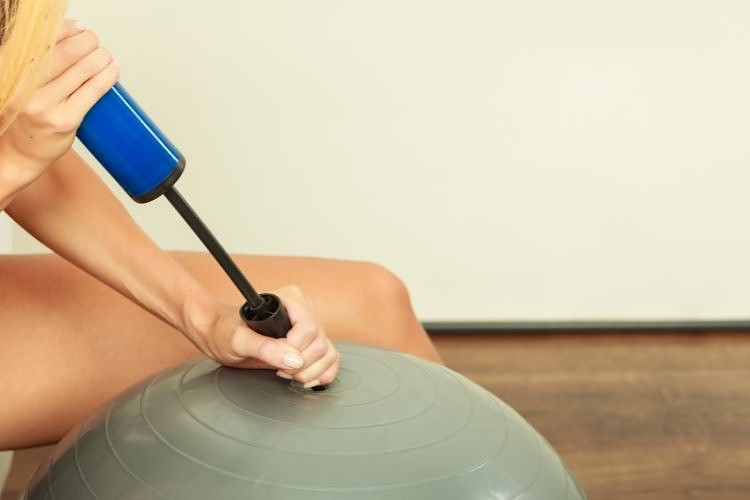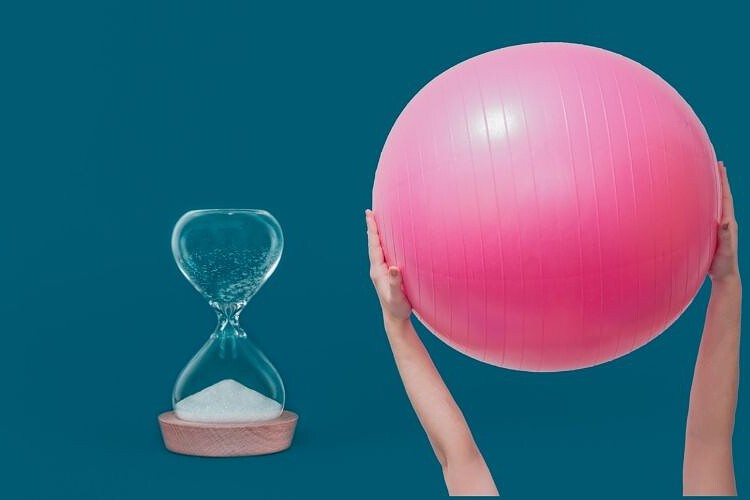As more and more people are becoming health conscious, various workout equipment that can be used at home are becoming popular.
One such exercise tool is an exercise ball.
Swiss balls, often known as exercise balls, have become quite the rage in both gyms and households. They are a trendy workout accessory for those who enjoy experimenting with different forms of exercise.
Paired with specific exercises, these huge balls aid in the development of core muscular strength, balance, and flexibility.
But, if you’re wondering whether it’s worth investing in an exercise ball, a regular exercise or swiss ball will last between 1 and 2 years in a gym.
Depending on how well they are cared for, some can endure up to five years. Besides, they are also quite affordable, so it’s not much of a risk.
However, there is a catch. You must know how to use an exercise ball effectively.
So, here’s a brief guide on exercise balls, how long they last, their benefits, and how to use them safely.
Table of Contents
How Long Does an Exercise Ball Last?
Typically, an exercise ball has a lifespan of 1 to 2 years with consistent usage. If you’re using it on a daily basis and for rigorous exercises such as weight training, you may have to look into replacing it even sooner.

On the other hand, if you’re using an exercise ball at home and maintaining it properly with regular cleaning and gentle use, it can even last for up to 5 years.
However, there are certain signs you must watch out for, as we’ll discuss later in this article, that will indicate whether you need to replace your exercise ball.
Will Exercise Balls Burst?
Although exercise balls are incredibly versatile, they do need to be cared for. If you don’t use them appropriately or the condition of the exercise balls is poor, you may end up damaging the ball or injure yourself.

Exercise balls are made to withstand a lot of abuse. But even if you have a high-quality exercise ball, you can’t expect it to last indefinitely.
An exercise ball has its limits, and when forced over those limits, it will burst.
Common Causes of Exercise Balls Bursting and How to Avoid Them
There have been quite a few cases of injuries associated with exercise balls.
While most injuries can be attributed to simple accidents, they’re sometimes caused by faulty equipment or misuse of this training tool.
An exercise ball bursting is another common phenomenon that can cause injury. There are several factors that can cause an exercise ball to burst.
Here are some of the most common causes of exercise ball bursting and what you can do to avoid them:
1. Exerting Excessive Weight
Every exercise ball comes with a weight recommendation.
More often than not, people tend to exceed this weight limit, either by putting too much pressure on it or using it for weighted exercises. Make sure you always check what the weight limit is and do not exceed it.
2. Over-Inflation
If you over-inflate your exercise ball, it stretches the material and puts the ball at a high risk of puncture.
3. Accidental Tears or Ruptures
Always make sure that there are no sharp objects lying on the floor where you will be using the exercise ball. Use the ball away from any sharp corners or other equipment that can cause a tear.
4. Weakened or Worn Areas
If you use the exercise ball regularly, it is crucial that you inspect it at least on a monthly basis to make sure there are no worn-out areas.
If you feel the material is wearing out, it is time to replace your exercise ball.
5. Excessive Outdoor Use
Did you know that the sun’s ultraviolet rays can wear out your exercise ball rapidly?
It is recommended that you use an exercise ball indoors in a cool place and avoid using it for strenuous physical activity such as hitting or kicking.
How to Inflate an Exercise Ball Properly?
When purchasing an exercise ball, make sure you check whether it comes with an air pump so that you can inflate it conveniently when needed.

With the proper equipment, inflating an exercise ball is quite easy.
Here are the steps you should follow to correctly pump your exercise ball:
- Allow 2 hours for the ball to come to room temperature. This will bring the plastic temperature back to normal, making it easier to inflate the ball.
- Put the conical tip of your ball pump into the opening in your exercise ball.
- Pump the ball up to 80% of its initial size. To fill your ball, push up or down on the lever on the pump.
- As you pump, the ball will begin to become larger. After pumping up the ball, insert the small white plug that comes with it and let it sit for 24 hours.
- After you’ve let the ball sit for a while, it’s time to pump it up to full size. Unplug the white plug you installed before and put the ball pump tip into the hole as quickly as possible.
- Keep pumping the ball until it is entirely filled.
- Re-plug the ball and set it aside for another day. Allow your ball to sit indoors until the next day before using it.
Is Using an Exercise Ball Worth It?
With so many of us leading a sedentary lifestyle, people tend to be on the lookout for ways to make their work lives healthier.

One of these ways is using an exercise ball.
Exercise balls give you the opportunity to try out diverse exercises and can even be used instead of an office chair.
However, considering the risk of an exercise ball bursting, one may wonder whether it’s worth using an exercise ball at all. Which tools you use for working out is entirely up to you, as you have to consider your exercises and goal.
But you can also take a look at the advantages and disadvantages of using exercise balls to make a more informed decision.
Advantages of Using an Exercise Ball
- Exercise balls may not be as exciting or glamorous to look at, but they’re an affordable way of getting your heart rate up and burning calories.
- Exercise balls can put a new spin on an old, boring exercise and make them more interesting, allowing you to re-engage your mind while training your body in new ways.
- Exercise balls promote stronger stability and core strength by engaging both the brain and the body, giving your stabilizer muscles a different experience.
Disadvantages of Using an Exercise Ball
- You could lose your balance without supervision, thus risking injury.
- Large bouncing balls are entertaining, but they occupy a lot of space.
- Having trouble maintaining your balance can distract you from the actual exercise, causing you to gain less out of it.
When Should I Replace My Exercise Ball?
It’s critical to label all exercise balls with the date you purchased them as well as their burst limitations.

Exercise balls have an approximate 12-month lifespan, depending on how much you use them. So it’s important you replace them after that.
Exercise balls also have a variety of burst limits, spanning from 200 to 1,000 pounds. These limitations should be marked so that persons who are heavier or who lift weights know to utilize the ball as per the burst limit.
Once you cross the 12-month mark, or even before then, if you’ve been using the ball excessively, you may want to consider replacing your exercise ball to ensure your safety. Remember, prevention is better than cure.
Conclusion
Exercise balls provide valuable support during stretches and exercises, and they need to be cared for properly to ensure effective use.
So, while some exercise balls can endure up to 5 years of use before needing replacement, if you’ve been using the same exercise ball for more than 2 years, it’s probably time to replace it.
We hope this article helped you get started with using an exercise ball safely and efficiently.

My name is Vance, and I am the owner of To Ergonomics. Our mission is to improve your workflow by helping you create a supportive and welcoming environment. We hope that you’ll find what you’re looking for while you’re here.

